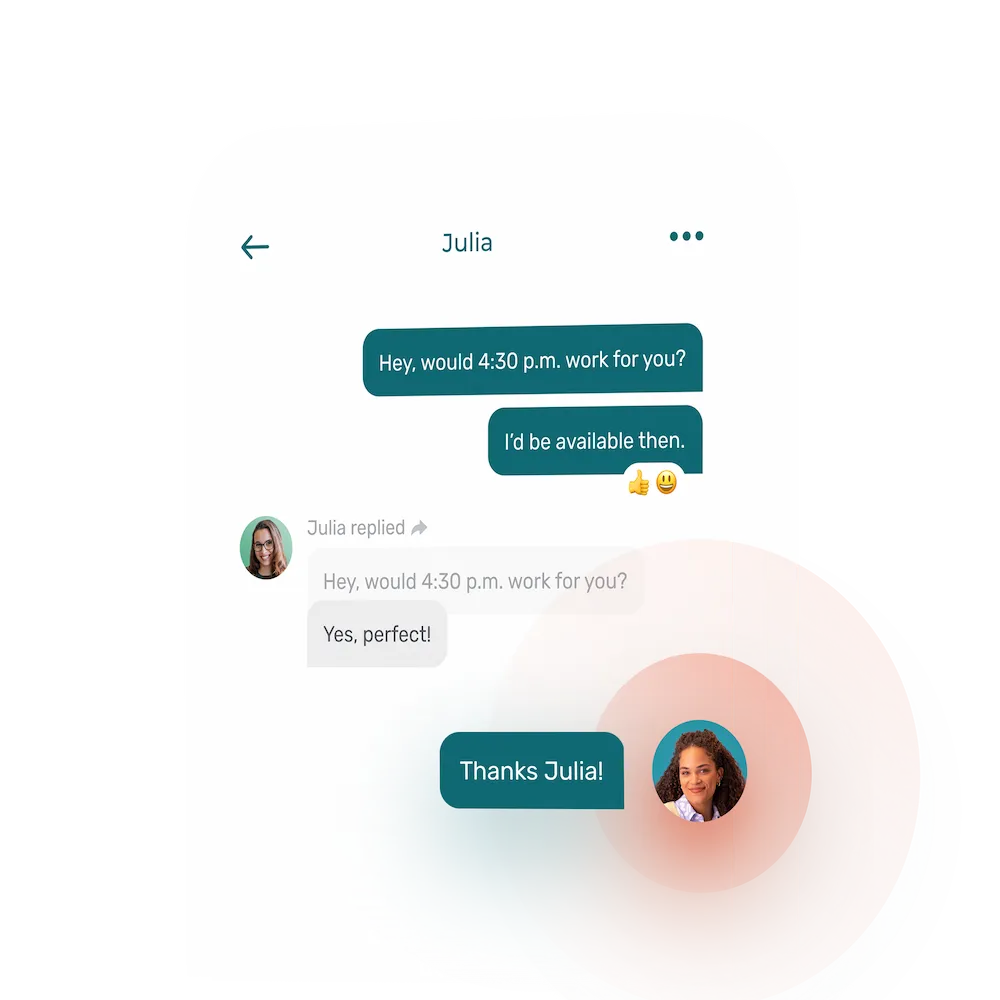An employee requesting time off at the last minute is a common occurrence in most businesses. Of course, an absence or sick leave normally occurs unexpectedly
Although it’s impossible to predict your employees’ absences (with the exception of their vacations), you can be well prepared to find solutions quickly. There are easy processes you can put in place to make things simpler.
That’s why I’ve put together a list of the best ways to handle and avoid last-minute employee absences.
Saturday Morning, 7:00 a.m.
You receive a call from an employee. He tells you he can’t come into work this morning. He’s bedridden, with too much of a cold to serve customers all day. What do you do about it?
The first thing to do, after hanging up and wishing your employee a speedy recovery, is to find a replacement. If there isn’t enough time, you’ll have to go to your workplace and replace the employee yourself, until you can find another solution.
As a manager, it’s your responsibility to replace your employees if no one else is available.
If you don’t use scheduling software, you’ll unfortunately have to be patient and contact your employees one by one to see if any of them might come in to work at the last minute. This is a tedious and often inefficient process.
With scheduling software like Agendrix, you can simply create a shift to fill and send it to all your employees who might be available. They’ll receive a notification directly on their cell phone, and can volunteer to work the shift.
You’ll be able to contact the employee who came forward first, or the one you’ve chosen to confirm details, using the professional messaging system.
💡 To encourage your employees to come to work at the last minute, consider offering a bonus to make the shift more attractive.
Managing a Last-Minute Absence Isn’t Just a Matter of Finding a Replacement
You found a replacement on time, and your coffee shop or pharmacy, for example, was able to open at the same time as usual. Everything was back to normal in no time. Now you have to deal with the administrative tasks surrounding this last-minute absence.
There are several possible scenarios when an employee is absent at the last minute, for example:
- The employee is sick and needs to rest
- The employee was denied a day off and decided to take a sick day instead
- The employee lied and simply didn’t want to work
Each type of absence necessarily requires a different response on your behalf. In all cases, start by documenting the absence in the employee record. If the employee still has sick days in the bank, you can note this in the schedule and adjust the leave bank accordingly.
Follow Up With the Employee
It’s essential to follow up with the employee to find out whether their absence will be prolonged. Sometimes a day off is all it takes to feel better. However, your employee may need to be away for several days. The sooner you know, the easier it will be to plan for the absence.
So, if this hasn’t been discussed with them on their first call, don’t hesitate to follow up with them. This will give you more time to find replacements and adjust the schedule if necessary.
If your employee seems to be absent frequently, it’s time to investigate a little further. Take the time to validate whether the absences seem to be repeated frequently on the same days, or whether they are simply too frequent. That’s why it’s so important to document all your employees’ absences, even legitimate ones.
If you think your employee is exaggerating or not respecting your absence policy, you need to arrange a meeting to discuss the matter with them. You’ll also need to implement the consequences set out in your absence policy, such as a formal written warning.
Be Flexible
Don’t be too rigid when your employees take time off, and be discerning and flexible. Don’t make your employees feel bad about taking sick days. It’s normal to be absent from work from time to time.
It’s better for an employee not to go to work than for them to share their virus with their colleagues and for the whole team to be contaminated and take turns being absent.
And don’t forget to check on your employees and make sure they’re feeling better when they return to work. This way, you clearly demonstrate that you care about their well-being and contribute to creating a healthy workplace environment.
As an employer, it’s to your advantage to offer your staff flexibility. For example, in Canada, employers are obliged to offer their employees 2 sick days per year. Why not do better? With the right tools in place, you should be able to handle even unplanned absences.
A Clear Absence Policy Avoids Many Problems
All absences should be governed by a clear absence policy, whether they are justified or not, real or false, repetitive or too numerous.
An absence policy not only tells your employees what is acceptable in your organization, but also identifies the rules governing absences and the procedures in place.
Your absenteeism policy should include all the rules surrounding absences in your organization. For example, your policy should contain:
- Your objectives: reducing the number of absences, improving employee well-being, communicating valid reasons for absence, etc.
- Roles and responsibilities of team members: name of manager to contact in case of absence.
- Rules to follow: description of justified absences, number of days of absence allowed without justification, accepted medical justifications, official documents to be provided, etc.
- The procedure to follow: the time limit to be respected in the event of absence, the forms to be completed after an absence, the contact person to be reached, etc.
- Penalties: depending on the type of absence (lying, lack of justification, etc.)
- Contact information in case of questions.
You should always present your absence policy to your employees when they first join your organization. Don’t forget to make it easily accessible, so that your employees can consult it whenever they need to.
Additional Strategies to Reduce Workplace Absenteeism
An absence policy alone is not enough to prevent absenteeism in your company. You’ll need to adopt other strategies to ensure that when your employees are not showing up, it’s for the right reasons.
Avoid Being Short Staffed
If only one employee is missing and you’re unable to keep your business running, it may be because you should have planned for more staff for the shift.
Make sure you have enough staff to cover all shifts, and enough employees to deal with unforeseen situations. For example, don’t hesitate to use seasonal employees to cover for employee absences during the summer. You can also hire part-time employees to lend a hand when needed.
Some industries, such as healthcare or pharmacies, also use agencies to fill certain shifts and keep their businesses running.
In any case, you may have to fill in for some shifts yourself when employees unexpectedly don’t show up. After all, you need to set an example and act as a leader for your team.
Adopt Best Management Practices
Implementing effective, caring management practices will certainly help you handle employee absences more effectively.
If you handle a team with variable working hours, you’ll need scheduling software. This tool will enable you to find replacements more quickly and even communicate more easily with your employees.
It will also be easier to allow your employees to swap shifts and avoid last-minute absences. This practice is a good way of making your employees feel empowered and responsible for their work schedule. Put everything in place so that your staff have other options than taking a sick day at the last minute when something unexpected comes up.
Also make sure you offer your employees flexibility and cultivate a healthy work environment by limiting stress. Employees who are happy at work are less likely to be absent, and much more likely to help out when needed.
Don’t hesitate to offer interesting and healthy working conditions—you’ll certainly come out as the winner.











